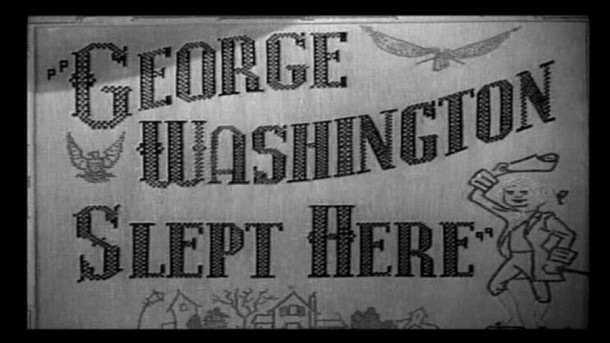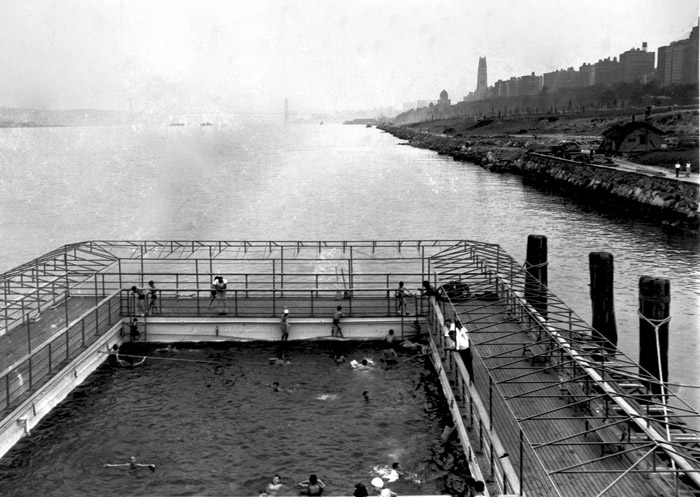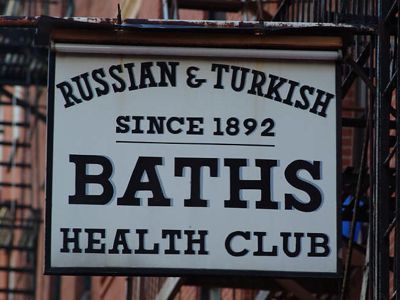Steam Bath Benefits in America: The History of Steambathing

Steam Bathing: A Journey through the Ages continues with part 8, an exploration of steam bath benefits in America. This is also the final chapter in the journey.
If you are new to this series, be sure to check out Steam Bathing: A Journey Through the Ages, which introduces the journey, Steam Bathing History With the Ancient Greeks and Romans, the Sweat Lodges and Temazcals of the Native Americans, Steam Bathing in the Onsen and Sento of Japan, The Turkish Hamam and the History of Steam Bathing, The Roman Baths in England and the History of Steambathing and The Banya of Russia and The History of Steambathing.
From Colonial Bathing Spas to Urban Steam Bathhouses in American Cities
You know those signs, “George Washington Slept Here?” Well, we might want to consider a few that read “Washington Bathed Here” – because he did, at the Berkeley Warm Springs in Virginia, considered an elite bathing spa for the affluent in America. Not only did Washington “take the waters” three times, but he also tried to cure his stepdaughter, Patsy Custits, of her epilepsy there.
But there was nothing democratic about Colonial spas. Bathing facilities such as the one Washington frequented – or John Adams, who spent four days in 1771 at Stafford Springs, Connecticut, which purported to cure gout, sterility, rheumatism and hysteria ― were too expensive for anyone but the wealthy. Colonial America followed the European model, and by the middle of the 18th Century, there were several spas, mineral springs, and watering places up and down the Atlantic coast. And, just as in Europe, early American religious leaders saw this trend as an “Immoderate and Growing Fondness for Pleasure, Luxury, Gaming, Dissipation, and Other concomitant Vices.” Yet the clergy was unable to shut down the bathing houses of America.
Commercially operated bathhouses began opening up just before the 1800s, and in 1792, the Bellevue, on the East River, offered baths of either “fresh, salt or warm water.” Many bathhouses included such leisure amenities as gardens, teahouses, or restaurants.
Just before the Civil War, bathhouses became fashionable in American cities, offering a variety of Russian, steam, vapor, and mud baths, as well as swimming. Chicago, for instance, had three bathhouses in the 1840s, one of which had a separate section for women. As would become common in America throughout the coming decades, many only operated in the summers.
Hydropathy, the Water Cure Craze of the 1840s and 50s
Adding to the popularity of bathing houses was the advent of the water cure craze of the 1840s and 50s. Hydropathy, a treatment that consisted of baths, compresses, steam, water massage, drinking water, exercise, and a simple diet, grew out of the concept that water sustained life.

Between 1840 and 1880, more than 200 water cure centers were founded throughout the United States, frequented mainly by women. Health reformers at this time affirmed how important bathing was to overall health and fitness.
Public Bathing Facilities for Immigrant Cleanliness
Cleanliness took on a symbolic meaning in America, and when waves of immigrants arrived, they had difficulty keeping clean and were therefore considered inferior to the middle class. Reformers recognized that, living in tenements and slums in urban areas, there was almost no way for them to wash. Existing public bathing houses cost more than these families could afford to pay. Attempts by reformers to establish free or low-cost bathing houses were too expensive to construct and maintain. This despite dozens of reports by medical organizations that public bathing was critical in light of such epidemics as the cholera outbreak of 1849.
But several bathing facilities – again, open only during the summer – were established in New York, Boston, and other major cities throughout the latter 1800s. Whether they had an impact on sanitation is still questionable. The cool water was a relief on the sultry summer days and a popular recreation. Young boys, for instance, limited to 20 minutes in New York’s floating baths, would go from bath house to bath house, each time presenting themselves with newly applied dirt!

Steambaths for Cleanliness and Networking: Turkish Steam Baths, Bathhouses and Shvitzes
As more immigrants came to Canada and the U.S., steambaths became not only a place to get clean, but also a social outlet and one of the best networking opportunities for jobs, housing, and more.
Mendel Riman¹s Russian Turkish Steam Bath in downtown Toronto, for instance, was generally the first place a new immigrant would go, particularly Jewish immigrants. While the city had other bathhouses, their clientele were highly prejudiced against Jews. But at Riman’s establishment, new immigrants would find themselves among their own kind – including rag and bottle peddlers, rabbis, cantors, and businessmen of every stripe.

Newark, NJ, boasted three steam baths – also called the “shvitz” ― where a largely Jewish clientele gathered.
Ladies’ Days were on Mondays and Wednesdays. It cost a nickel to take the steam, complete with soap and towel. Amenities included massage (masseuses were called “rubbers”), as well as leeches to purify the blood, and “cuppers,” glass cups applied to the skin by suction, widely believed to cure a number of bodily ailments.
After sweating and bathing, customers could go downstairs to the restaurant or to a dormitory with cots, where they could socialize or nap. Some customers even stayed overnight.
The Jewish mob frequented the “shvitzes” of Newark, just as the Chicago mob did in the bath houses there. While sweating in the steam, they would talk “business.” Who knows what nefarious plans wafted up in the steam?
The Benefits of Steambathing in Modern America
With increased plumbing facilities in private homes and apartments, the public baths of America languished ― until their contribution to health resurfaced and they were added as luxury amenities to hotels, fitness establishments, spas and more.
Want to try steam for yourself? You’ll be able to at Canyon Ranch, The Ritz-Carlton, The Luxor, Bellagio, MGM Grand in Las Vegas, among many, many other major resorts, athletic franchises, and popular health facilities. Visiting steam facilities in America is as easy as visiting Mr. Steam’s Try Us Out page. There you will see links to practically every state in the U.S. – and some international ones, besides!
This is the final stop on the 2,000-year plus Steam Bathing Journey through the Ages. Let us know which stop you liked most and which benefits of steambathing you enjoy most.
Image Credits:

 SEARCH
SEARCH
 FIND A DEALER
FIND A DEALER






